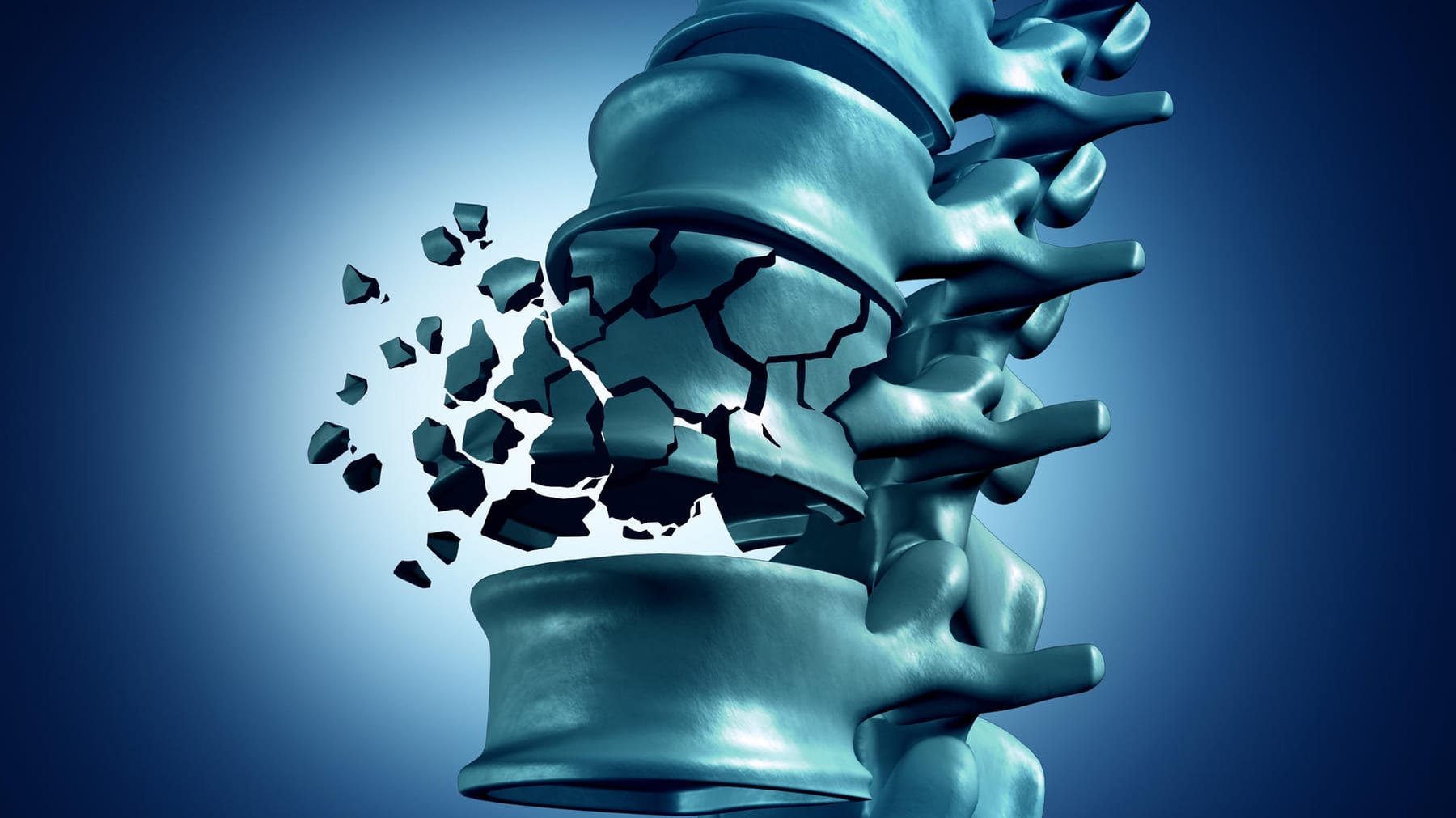As an older person, walking with a cane with your upper body bent is not a fun idea. Spinal deformity is usually a gradual process.
Spinal curvature begins subtly and progresses slowly. Several factors play a role here. Read here what changes you should pay attention to and how you can strengthen your back.
Causes of back curvature
“There are three main reasons why the back becomes crooked as we age,” says Professor Andreas Kurth, Chief Physician for Orthopedics and Orthopedics at the Mittelrhein Community Hospital in Koblenz and President of the Comprehensive Osteopathic Association (DVO).
Has your risk of osteoporosis increased? Click here to test.
The first reason relates to age-related bone and muscle loss. “From age 40 on, the body loses about one percent of bone and muscle mass per year. By age 65, this is already reduced by 25 percent,” Kurth says. This makes it more difficult to walk straight and the body tends to lean forward. As back muscles are lost, the susceptibility to fractures of the vertebral bones also increases. The spine loses support and becomes deformed.
The second cause of kyphosis (curvature of the back) affects the intervertebral discs. “Your flexibility decreases as you age,” Kurth says. The resulting overload on the spinal bones also has a negative effect on the stability of the spine. The expert points out that fractures of the vertebral body as a result of osteoporosis are the third cause of spinal deformity.
Osteoporosis changes the skeleton
Osteoporosis is the most common bone disease in older people. Women over the age of 60 are particularly at risk, while the risk of bone loss increases in men from age 70. Due to hormonal changes during menopause, as the bone-protecting hormone estrogen decreases, the natural loss of bone mass in women is accelerated.
Good to know: First vertebral body fractures often remain undetected. The pain is interpreted as “normal” back pain. The consequences are serious: the risk of further vertebral collapse increases several times after the first fracture.
Slow collapse of the vertebral bodies
Osteoporosis often begins gradually, and patients do not notice the disease at first. If several fractures follow one another, the vertebral bodies collapse into a wedge shape and the spine loses its original shape. There is shortening in height and the back develops into a convex curvature. This condition worsens as more vertebrae are affected.
“Widow’s Hump” and “Osteoporosis”
As osteoporosis progresses, even simple efforts such as lifting a bag or sneezing can cause the spine to collapse. Those affected often notice this and misclassify potential back pain. “Many of these ‘slipped fractures’ go unrecognized and remain untreated,” Kurth says. This greatly increases the risk of further fractures.
If left untreated, spinal collapse can lead to significant disabilities. Due to the curvature of the spine, the center of gravity of the body shifts forward and is called “widow’s hump” Arises. “It’s basically nothing more than a pronounced curvature of the back, or kyphosis,” Kurth explains.
As a result of the curvature of the skeleton, the stomach usually swells more. This phenomenon is colloquially known as “Osteoarthritis of the abdomen” specific. The deformities eventually lead to changes in posture and the gait becomes slower and more unstable.
Loss of volume and the “Christmas tree phenomenon”
Collapse of the spine can also lead to a decrease in height of up to ten centimetres. It will be on the back Shrink Visible through excess skin. It hangs flabby in the folds of skin on either side of the spine, which is why it is also known “The Christmas Tree Phenomenon” He speaks.

“Tv expert. Hardcore creator. Extreme music fan. Lifelong twitter geek. Certified travel enthusiast. Baconaholic. Pop culture nerd. Reader. Freelance student.”






More Stories
Mysterious methane on Mars: NASA has a new theory
Mysterious methane on Mars: NASA has a new theory
Exoplanet WASP-43b: Clouds of liquid rock, but surprisingly methane-free